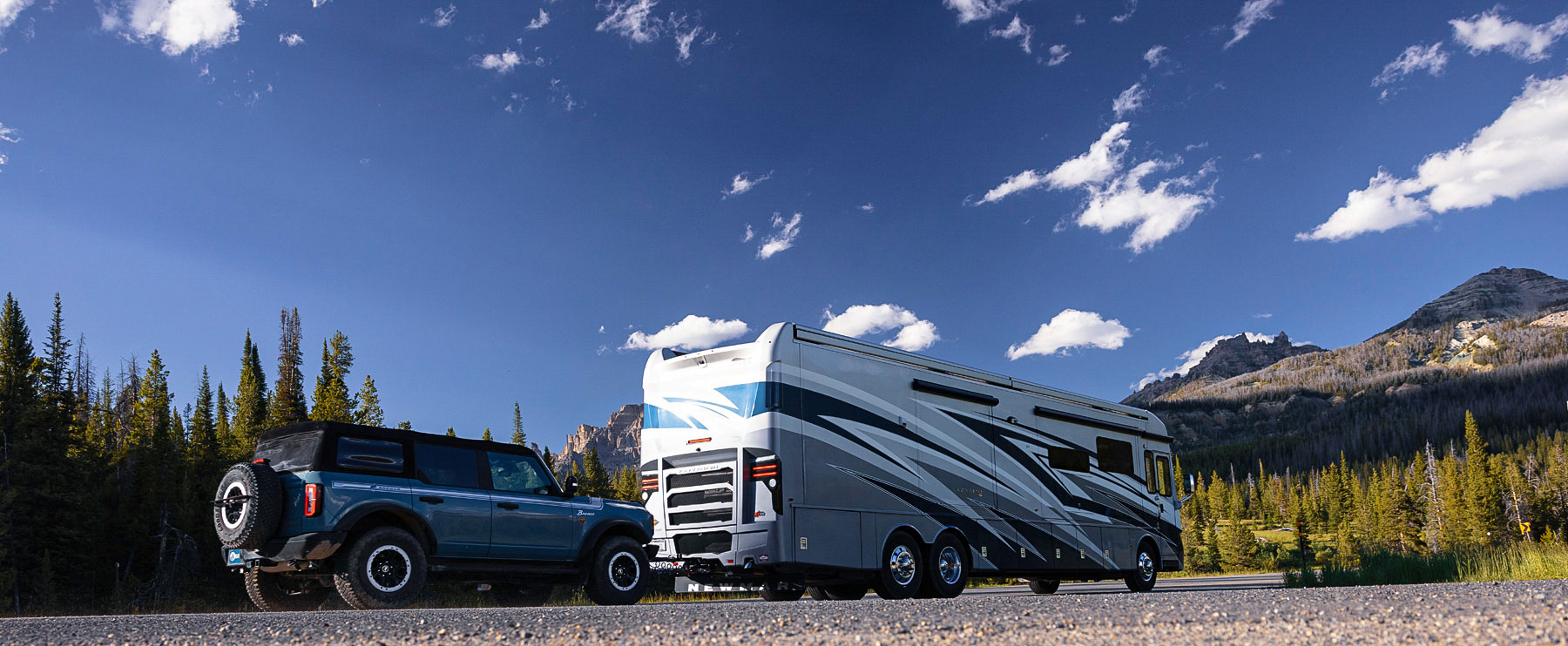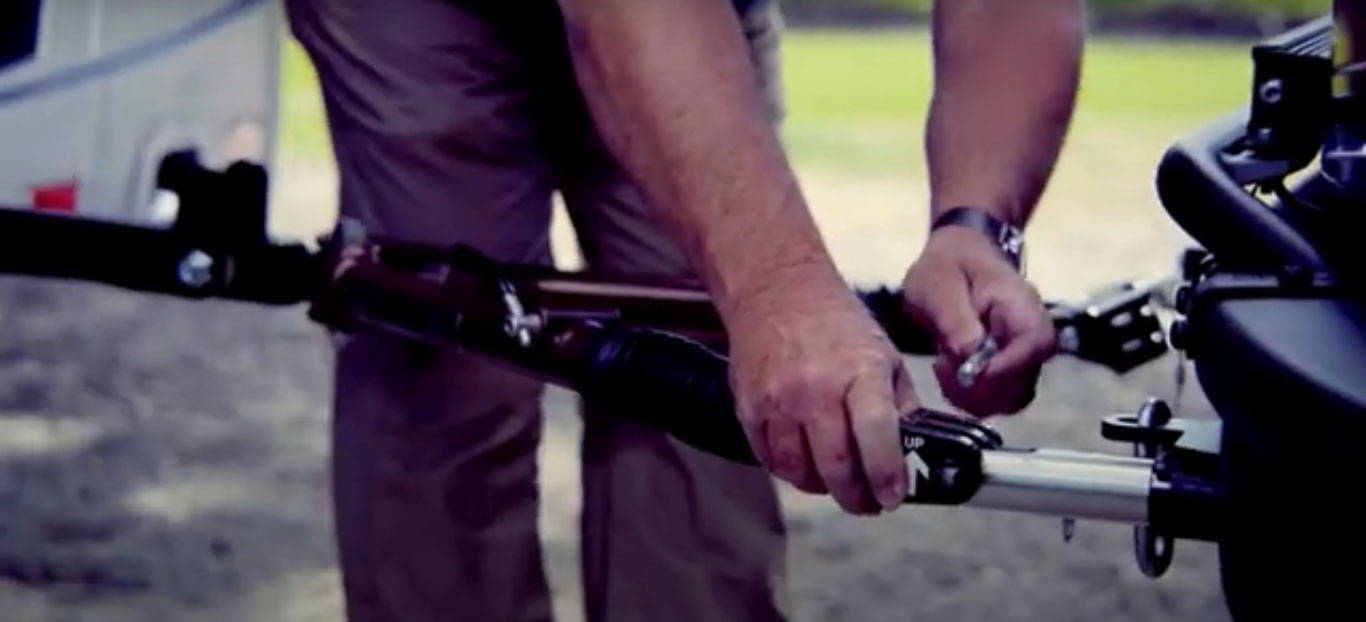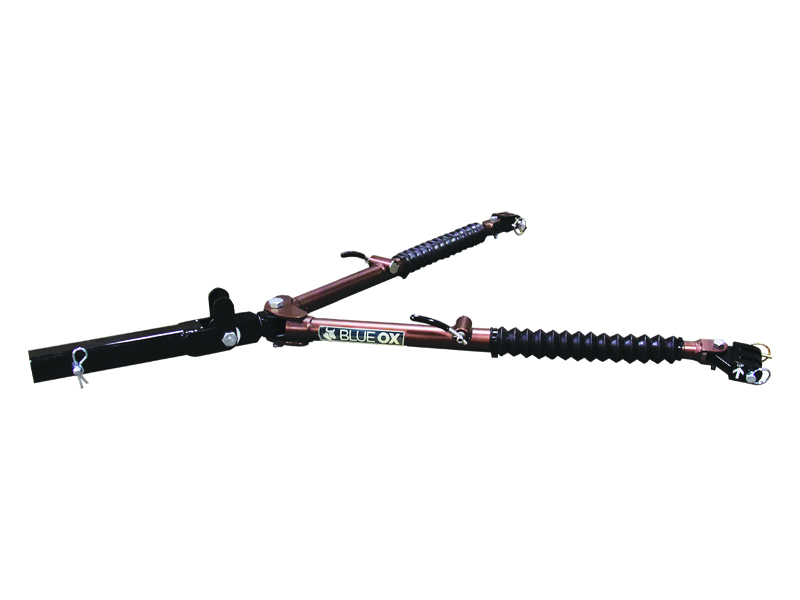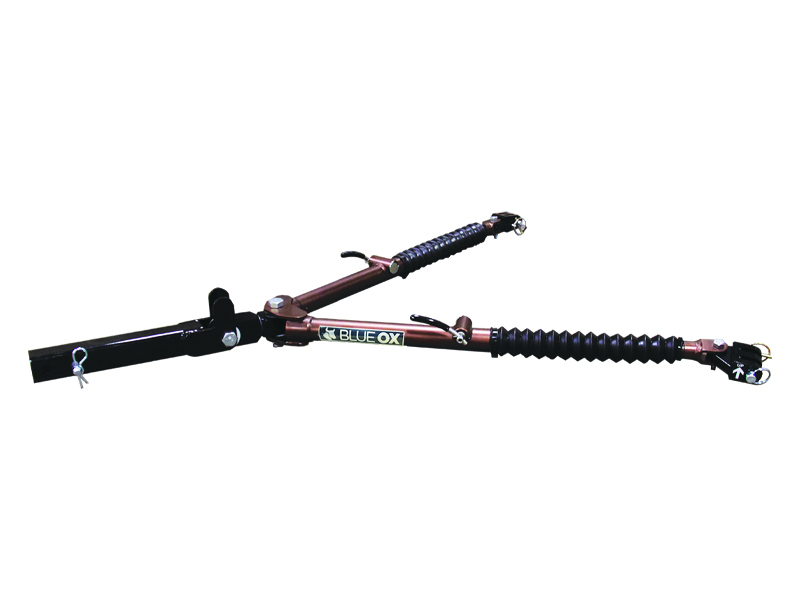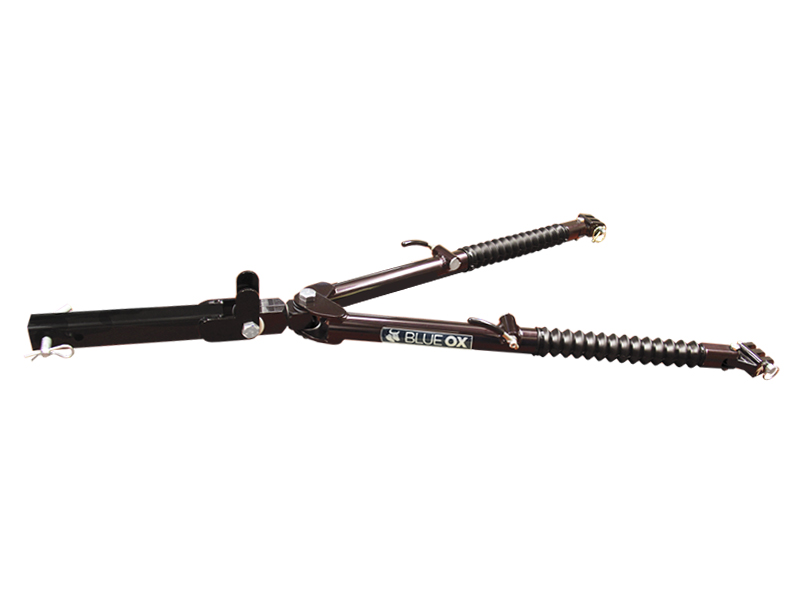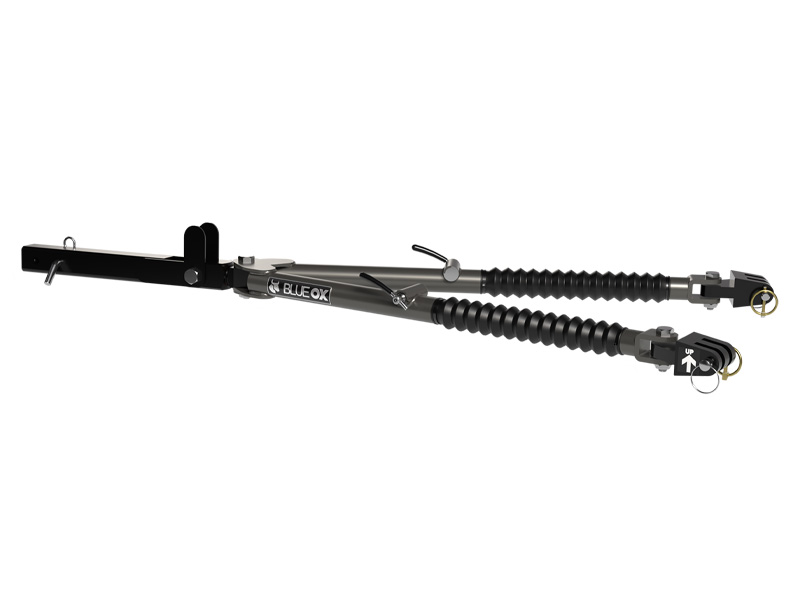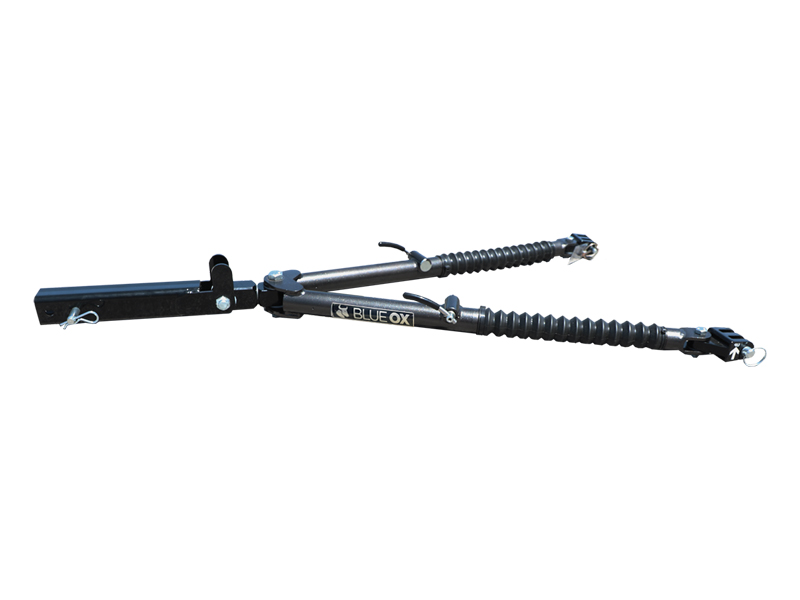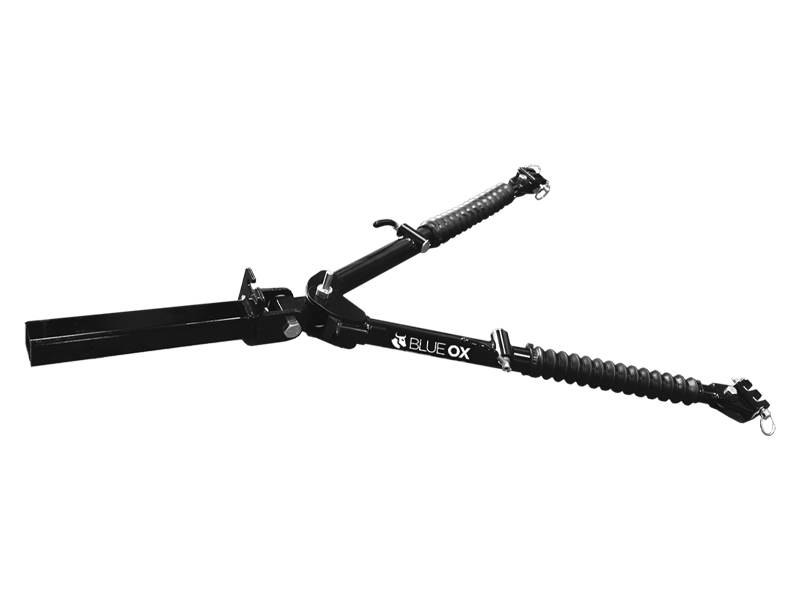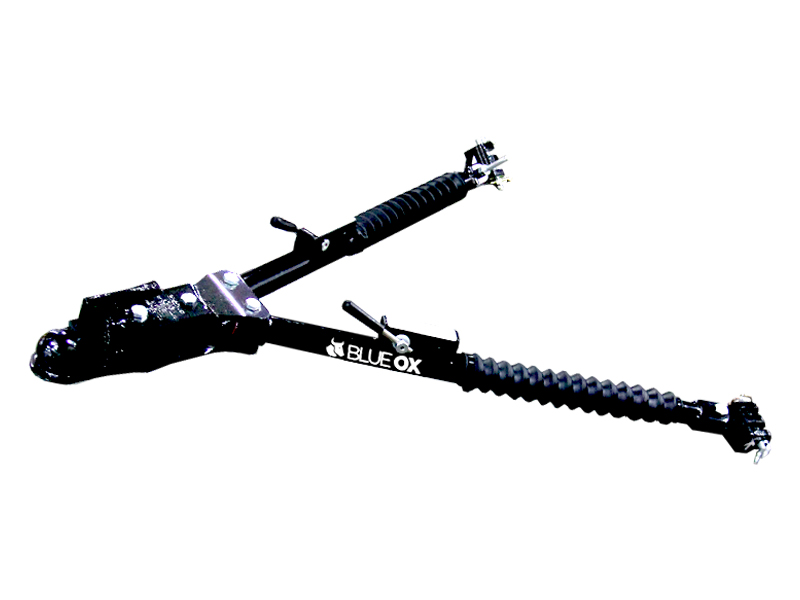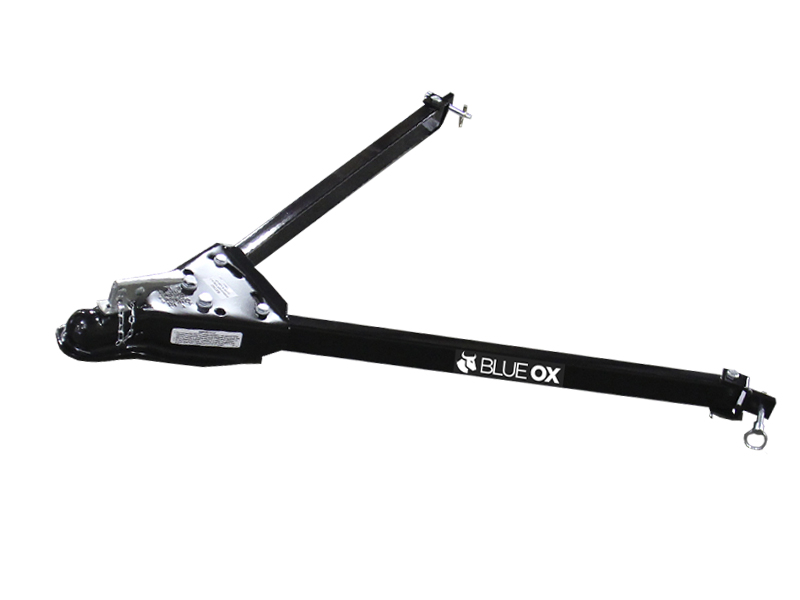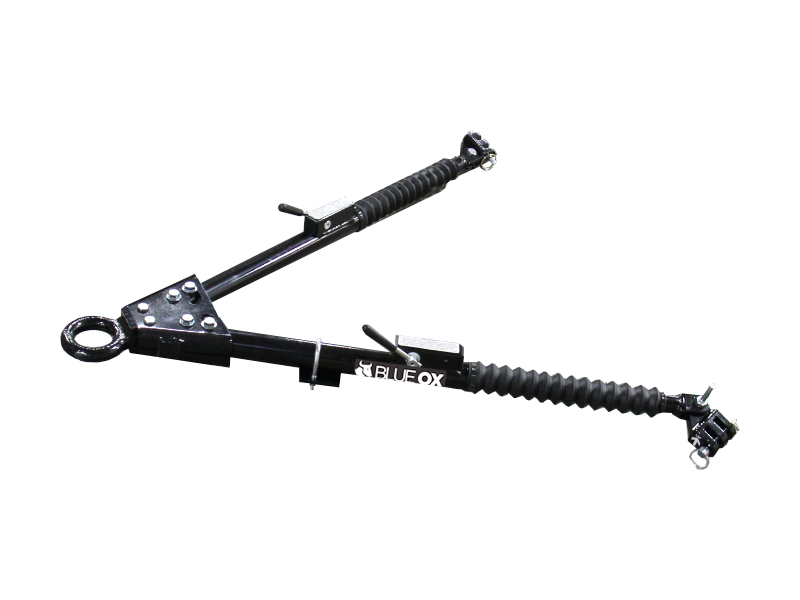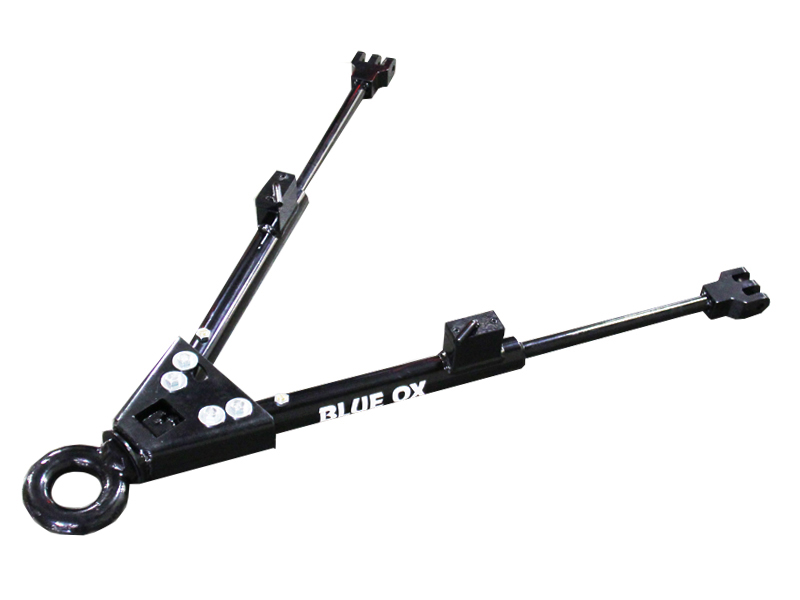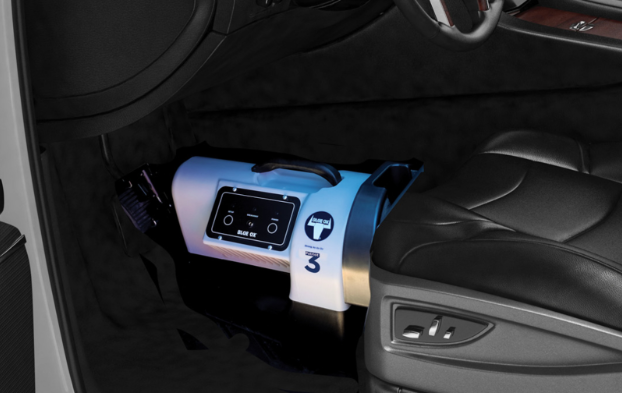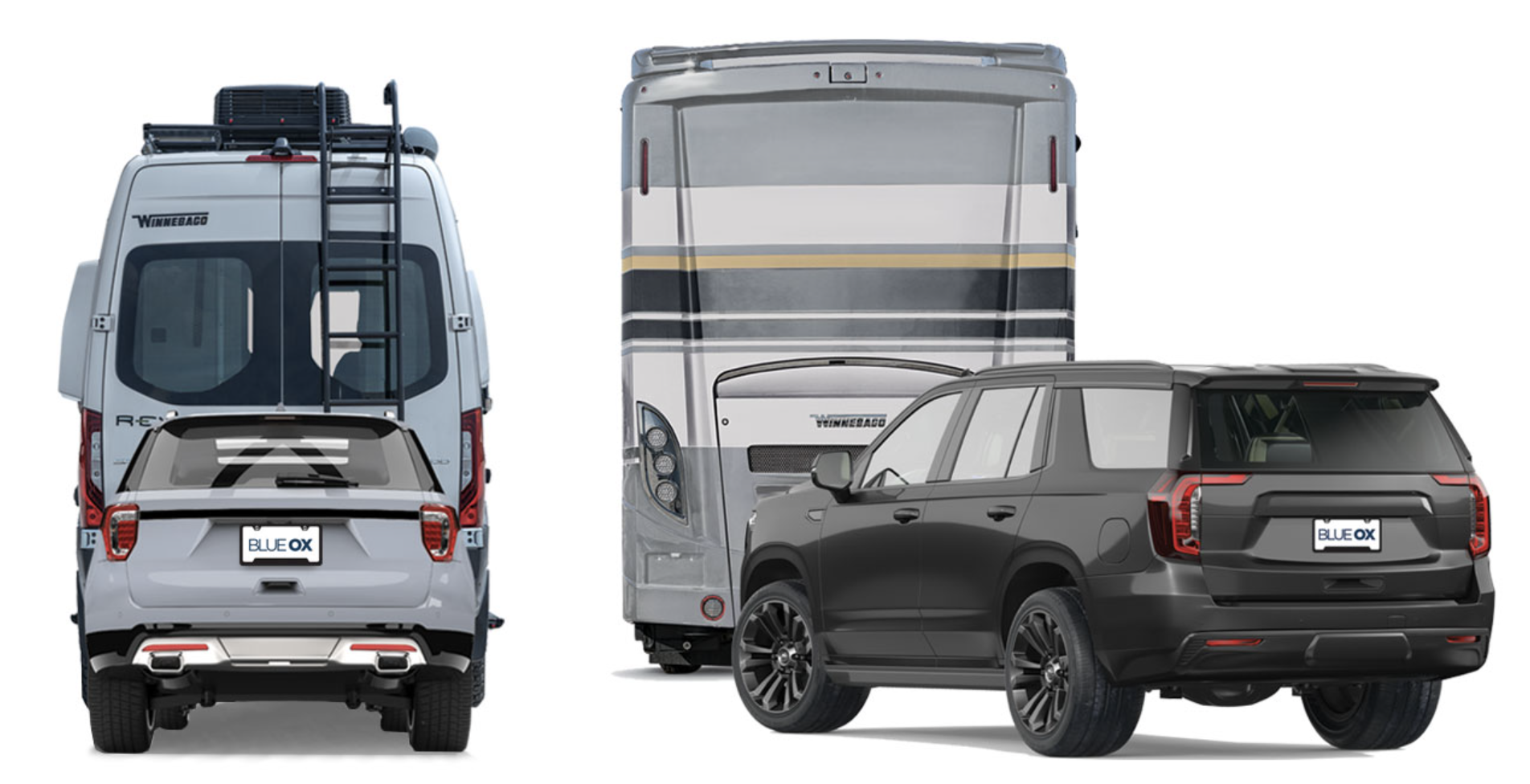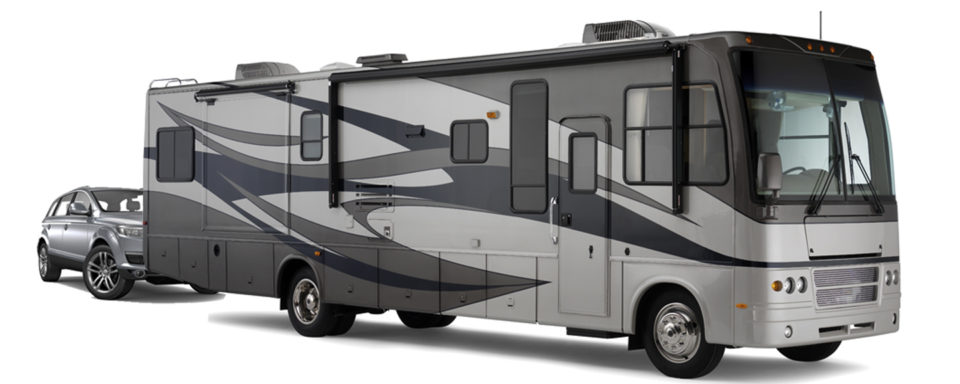WE SET THE BAR IN AWARD WINNING TOW BARS
We offer RV tow bars to meet all of our customer’s needs. Towing ranges from 6,500 to 15,000 lbs, and accessories make hooking up easy. Blue Ox tow bars set the standard in the industry with our premium models featuring 2” longer legs providing more room between the tow vehicle and your flat towed vehicle. Patented non-binding latches quickly disconnect even in the most rugged terrain. Our premium powder coat over e-coat accents any coach or tow vehicle.
Our baseplates set the standard in the industry with removable tabs that give a clean OEM look when not in use. Our supplemental brake systems offer cutting-edge technology and simplicity. We want you to enjoy their travel and flat towing experience.
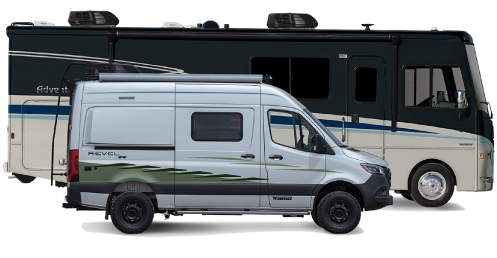
Made-to-last premium powder coat over e-coat finish protects your investment and accents any coach or tow vehicle.
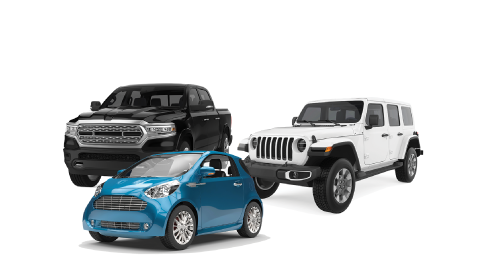
Tow capacities from 6,500 to 15,000lbs. All-steel construction. A lightweight aluminum model is also available.

Patented, non-binding latches disconnect, even in the most rugged terrain. Rubber boots protect the legs from dirt and debris.
Our Most Popular Tow Bars
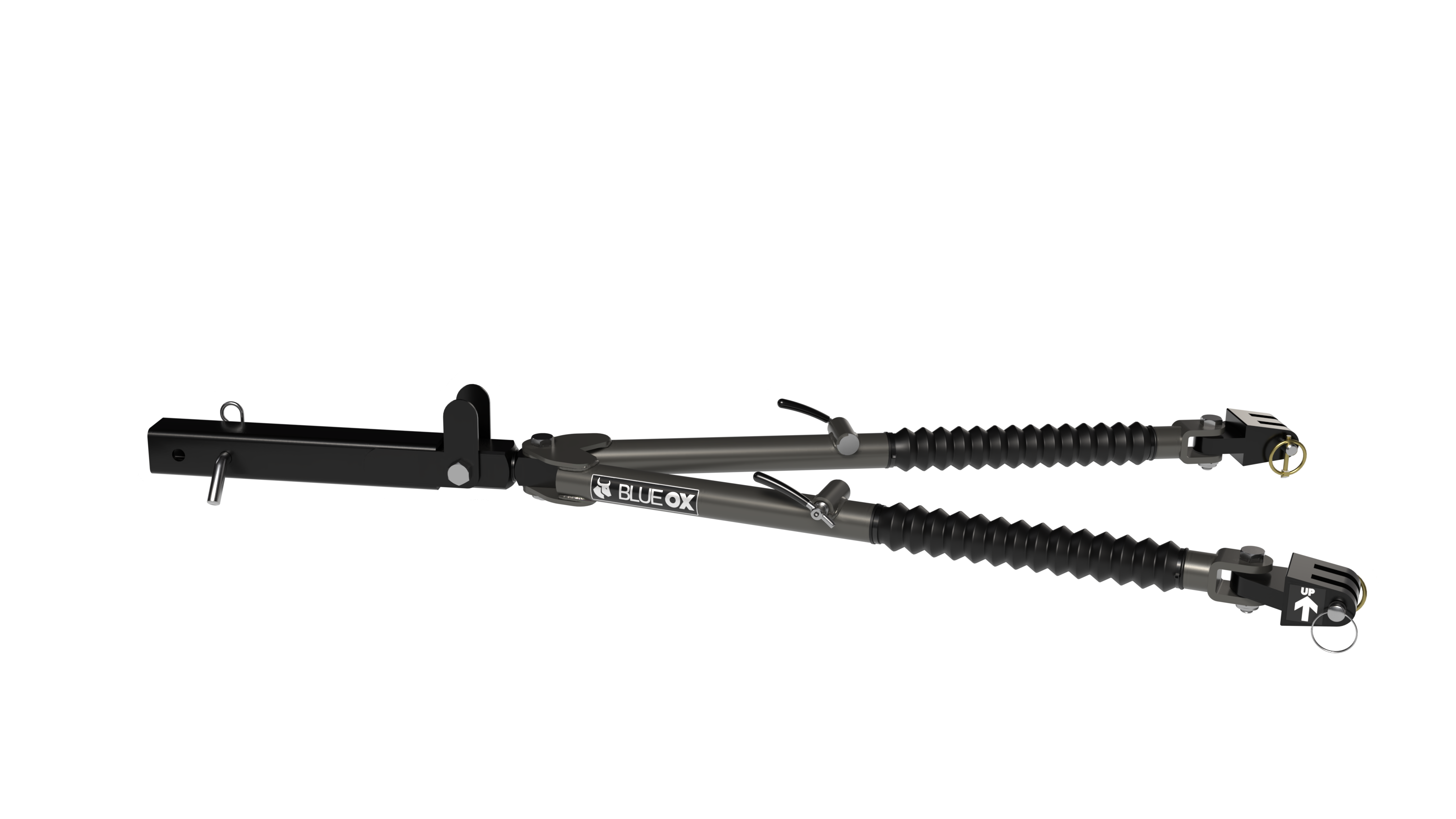
Apollo™
All steel construction.
15,000 lbs towing capacity.
2″ & 2.5″ Receivers Available.
- Rated for ¾ and 1 ton pickups and larger SUVs, up to 15,000 pounds GVWR
- Self-aligning for quick and easy hook-up
- Off-set triple lugs and non-binding latches ease unhooking on uneven terrain
- No centering pin, so it is easy to stow and store
- Rubber boots to prevent dirt and debris from damaging the legs
- Safety cables included
- Three-year warranty
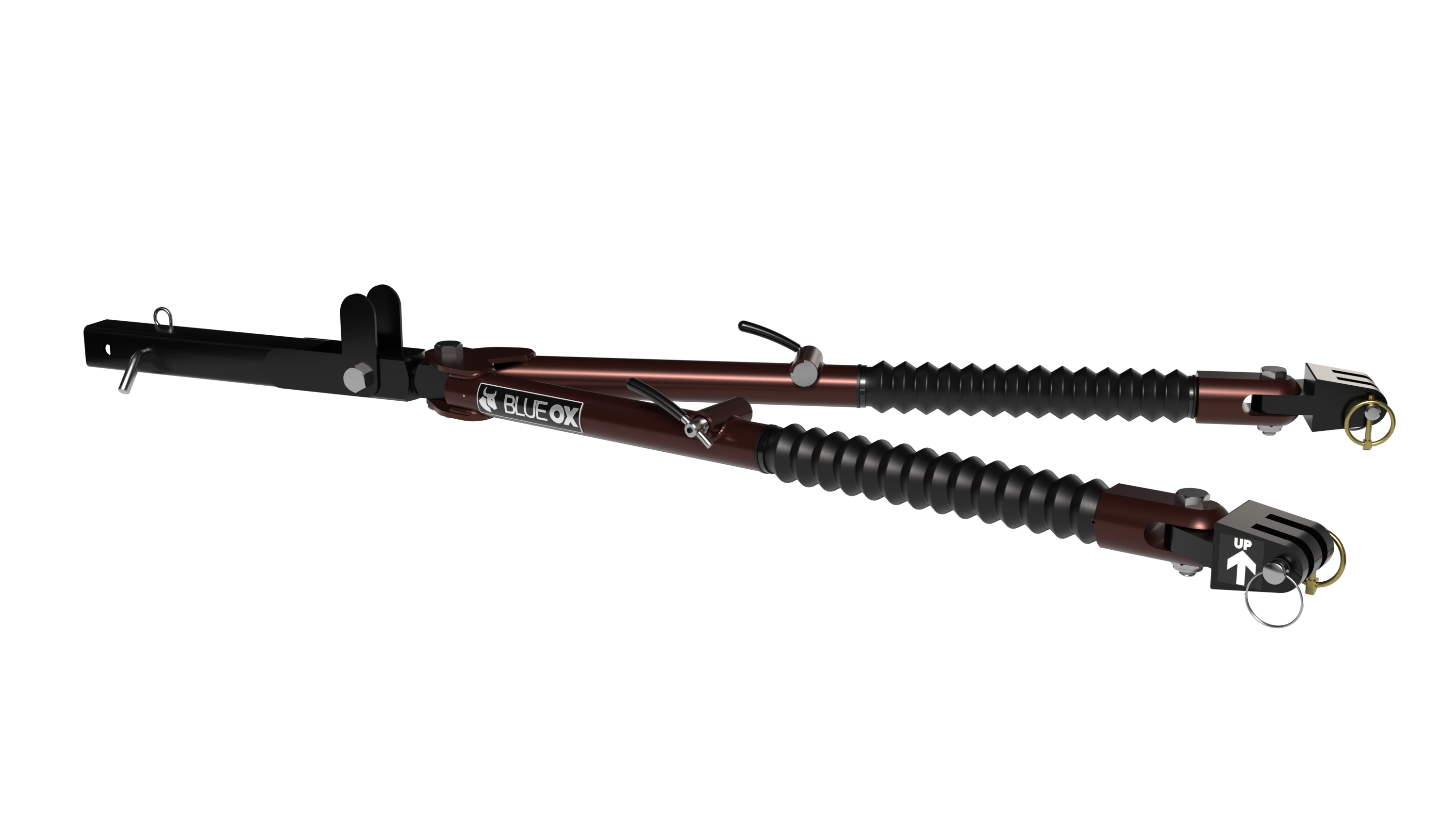
Ascent™
Aluminum construction.
7,500 lbs towing capacity.
2″ & 2.5″ Receivers Available.
- Rated for smaller cars and SUVs, up to 7,500 pounds GVWR
- Self-aligning for quick and easy hook-up
- Off-set triple lugs and non-binding latches ease unhooking on uneven terrain
- No centering pin, so it is easy to stow and store
- Rubber boots to prevent dirt and debris from damaging the legs
- Safety cables included
- Three-year warranty
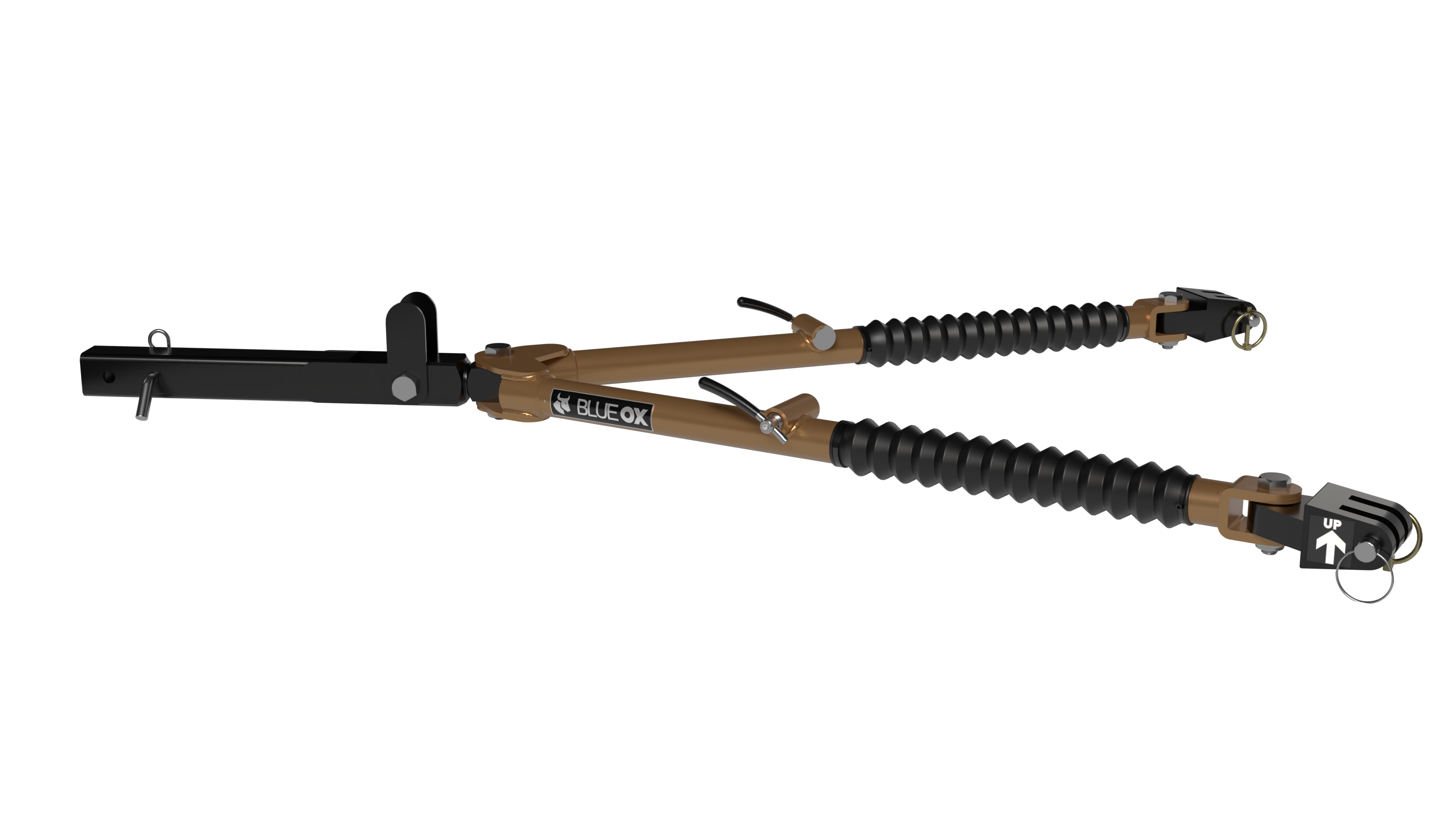
Avail™
All steel construction.
10,000 lbs towing capacity.
2″ & 2.5″ Receivers Available.
- Rated for a wide variety of towed vehicles, from larger cars to ½ ton pickups, and SUVs up to 10,000 pounds GVWR
- Self-aligning for quick and easy hook-up
- Off-set triple lugs and non-binding latches ease unhooking on uneven terrain
- No centering pin, so it is easy to stow and store
- Rubber boots to prevent dirt and debris from damaging the legs
- Safety cables included
- Three-year warranty
All Tow Bar Products
All Weight Distribuition Products

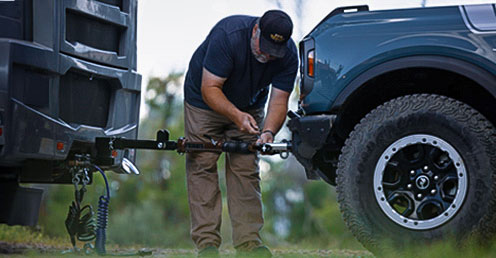
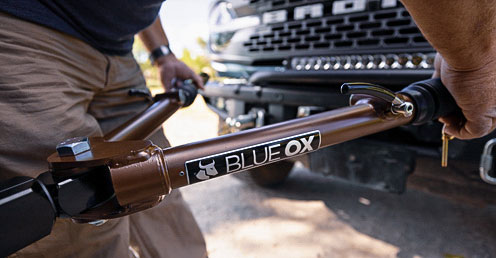
Tow Bar FAQs
Tow bars create a secure connection between a towing vehicle and a towed vehicle, allowing the towed vehicle to be pulled behind without the need for a trailer. They use arms that extend and pivot, adapting to turns and movements.
Connect the tow bar to both vehicles as described above. Ensure brake and light systems are integrated. Release the parking brake of the towed vehicle. Engage any required transmission settings on the towed vehicle for flat towing. Drive slowly initially to ensure everything is secure, and regularly check connections during the journey.
Choose the right tow bar for your vehicle. Install a base plate on the towed vehicle’s front. Connect the tow bar to the towing vehicle’s hitch receiver. Attach the tow bar to the base plate. Ensure all connections are secure and add safety cables and brake/light wiring. See our guide for installing blue ox tow bars.
When you have your towed vehicle connected to the RV and attempt to back up, you will certainly cause damage. Tow bars are designed to handle the load and stress in one direction. Your dinghy-towed vehicle cannot steer when you are backing up. You will end up with damage to the vehicle and the tow bar. Learn more about backing up with a tow bar.
Tow bars create a secure connection between a towing vehicle and a towed vehicle, allowing the towed vehicle to be pulled behind without the need for a trailer. They use arms that extend and pivot, adapting to turns and movements.
Choose the right tow bar for your vehicle. Install a base plate on the towed vehicle’s front. Connect the tow bar to the towing vehicle’s hitch receiver. Attach the tow bar to the base plate. Ensure all connections are secure and add safety cables and brake/light wiring. See our guide for installing blue ox tow bars.
Connect the tow bar to both vehicles as described above. Ensure brake and light systems are integrated. Release the parking brake of the towed vehicle. Engage any required transmission settings on the towed vehicle for flat towing. Drive slowly initially to ensure everything is secure, and regularly check connections during the journey.
When you have your towed vehicle connected to the RV and attempt to back up, you will certainly cause damage. Tow bars are designed to handle the load and stress in one direction. Your dinghy-towed vehicle cannot steer when you are backing up. You will end up with damage to the vehicle and the tow bar. Learn more about backing up with a tow bar.
How to Determine if Your Vehicle is Flat Towable
Refer to your vehicle’s owner’s manual or contact the vehicle’s dealer or manufacturer. They can help determine if your car, pickup, or SUV is flat towable. Will flat towing void the vehicle warranty? If the owner’s manual states that the vehicle is flat towable and you follow the manufacturer’s instructions, it will not affect your warranty.
Flat Towing Safely
Since the motorhome will be doing the heavy work, it’s essential to determine its tow rating. Either the motorhome or chassis manufacturer should be able to provide you with this figure. Then, either consult the vehicle owner’s manual or specifications chart online to determine the vehicle weight, keeping in mind that this is the “base curb weight,” or the weight of the lowest trim level with standard equipment and all necessary fluids, but does not include any gear you might pack into it/on it.
Most motorhomes have a rearview camera that can be switched on (or stays on), allowing you to check on the vehicle as you drive. A tire-pressure monitoring system (TPMS) will help you keep tabs on the dinghy’s tire pressures. At the same time, a braking monitor will tell you if the vehicle’s brakes are dragging or otherwise malfunctioning so you can act before any real damage occurs.
Is a supplemental braking system required to flat tow?
The laws by state by state vary, and traveling into Canada, it is required with no exception. Blue Ox stands by two essential things when discussing supplemental brakes:
1. Having a supplemental brake installed helps prolong the brake life of the coach; if the coach brakes are doing all of the work to stop the combined vehicles, they will prematurely wear.
2. The supplemental brake will make the combined vehicles slow together (evenly) and eliminate premature wear to the tow bar.
3. More info
Advanced Paint Technology for Superior Durability
E-coat Immersion ensures 100% coverage of complex parts, as well as uniform thickness. This in turn ensures superior corrosion protection.
We add a Powder Coat on top of the E-Coat to make our products UV stable, lending an increased protection to products that face exposure to the elements.
Consistent and controlled application of both the e-coat and powder coat processes are performed by the TTX ACC's (Automated Conveyor Carriers) and a Nordson Encore Automatic Spray System.

